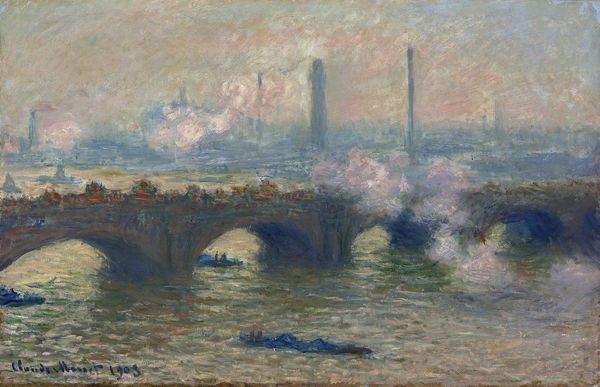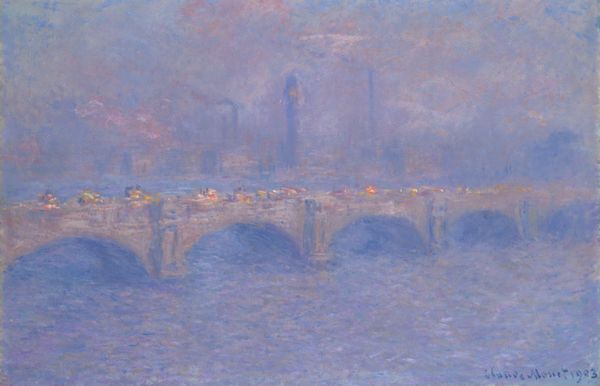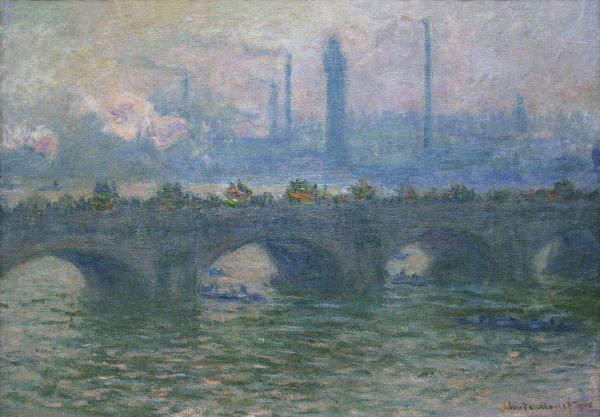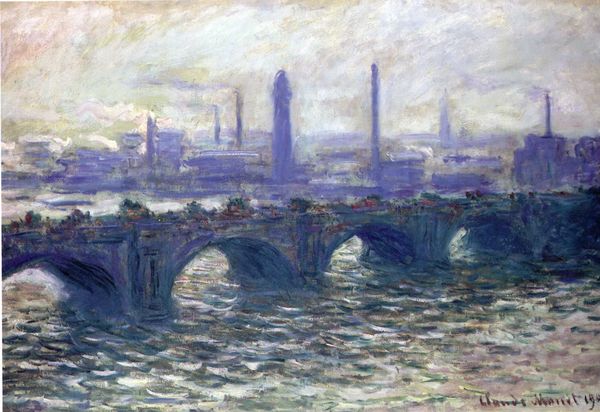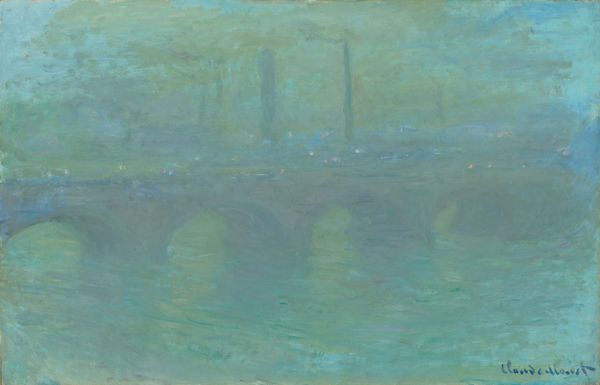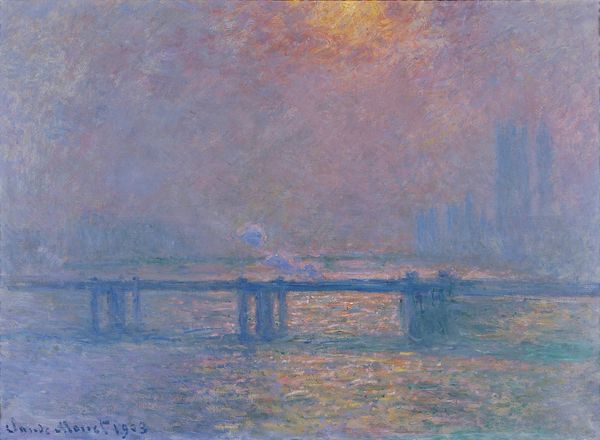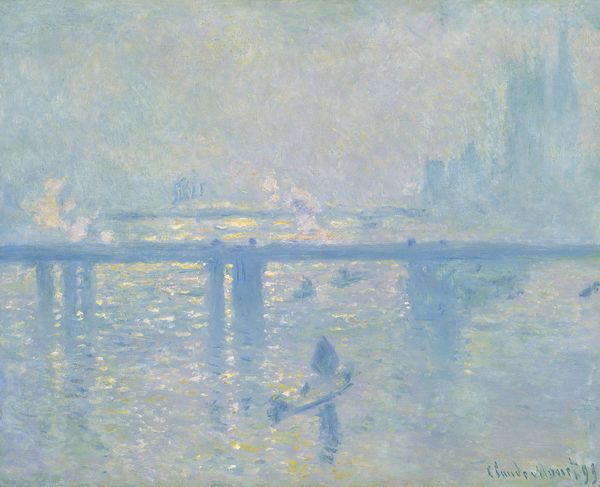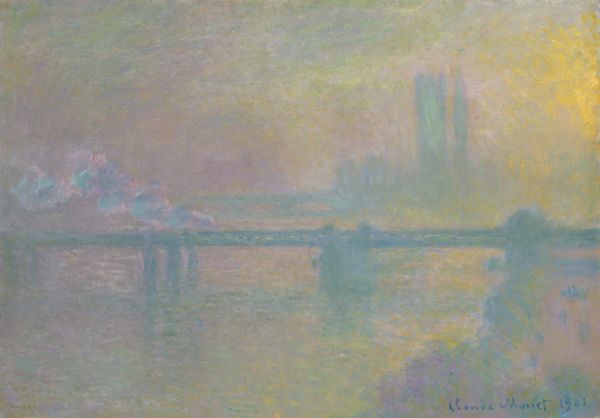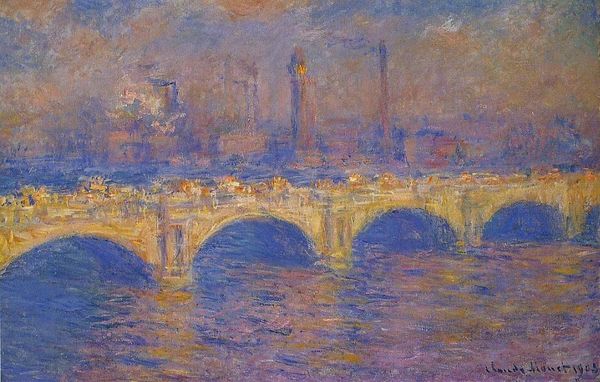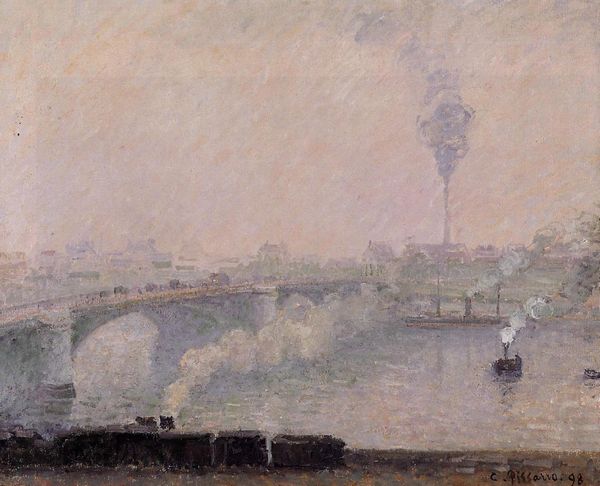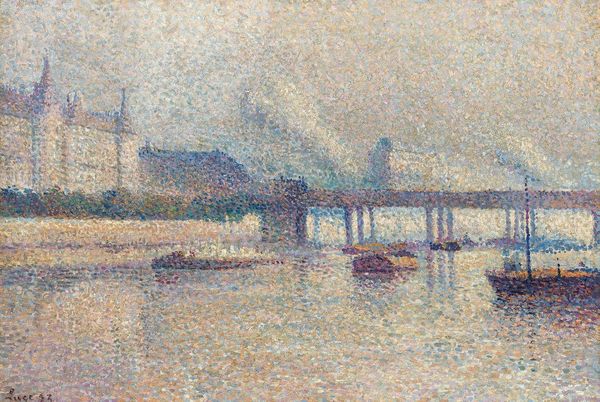
Dimensions: 65.4 × 92.6 cm (25 3/4 × 36 3/8 in.)
Copyright: Public Domain
Claude Monet captured Waterloo Bridge on canvas during his extended stays in London from 1900 to 1904. During these years, London was the heart of industrial innovation, but it was also known for its smog, caused by coal-burning factories. In this painting, Monet doesn't shy away from depicting the city’s pollution. Instead, he uses it to explore the theme of transience. Monet blurs the solid structures of the bridge and buildings into impressions. The bridge is softened with a veil of grey and blue which helps to hide the figures crossing it. Monet was less interested in painting an accurate depiction of London. Instead, he sought to capture his subjective experiences and emotions when witnessing the city's atmospheric effects. He once said, "I couldn't get by without these London fogs." “Waterloo Bridge, Gray Weather” stands as a historical document of London's industrial era, but also a visual metaphor for the fleeting nature of modern life.
Comments
No comments
Be the first to comment and join the conversation on the ultimate creative platform.
